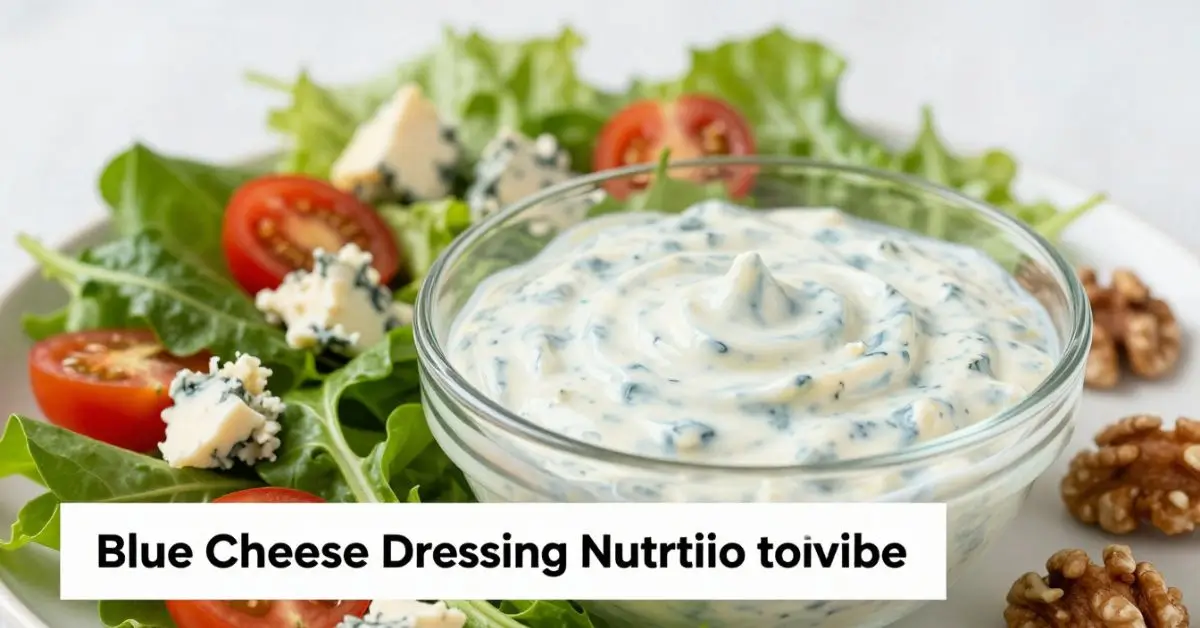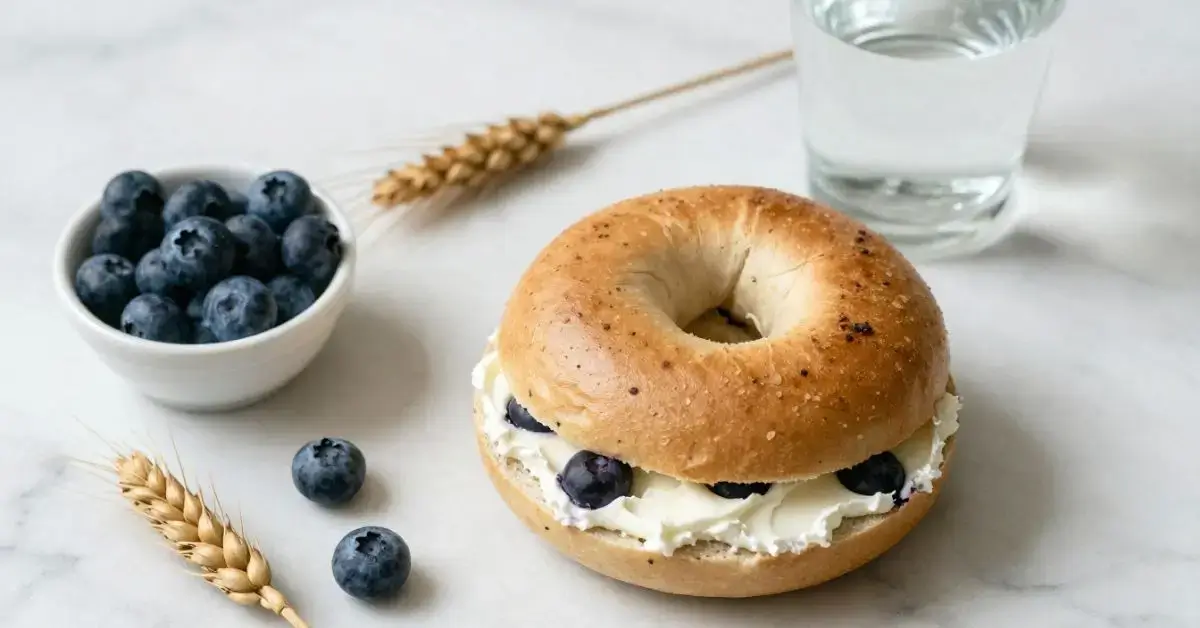FOOD
How to Eat Healthy as a Truck Driver: A Guide from HMD Trucking

Introduction to Healthy Eating for Truck Drivers
Truck driving is often seen as a lifestyle defined by long hours on the road, tight schedules, and limited access to healthy food options. However, maintaining a nutritious diet is crucial for truck drivers, not just for physical health but also for mental clarity and overall well-being. With the right strategies, drivers can turn their vehicles into mobile kitchens, ensuring they have the fuel they need to stay alert and energetic. For more tips on healthy meals for truckers visit https://www.hmdtrucking.com/blog/healthy-meals-for-truck-drivers/.

Eating healthy on the road does not necessarily mean flavorless and no convenience. With a little practice in making informed choices, truck drivers can confidently navigate the aisles of convenience stores and rest stops. Knowledge of the importance of a meal will help to successfully fight fatigue that comes from driving for long periods of time, and it also will help in lowering the risks for chronic conditions such as obesity, diabetes, and heart disease.
In this post, we’ll go through practical tips, meal prep ideas, and snack suggestions that work for truckers. No matter if you are an old-timer or just hit the open road, embracing healthy eating habits can turn your journey into a healthier and more enjoyable experience. Now, let’s take up the challenge together-improving our nutrition!
Understanding the Challenges of Eating Healthy on the Road
Truck driving is a very demanding job; it involves long hours of driving on the road where there are limited opportunities for healthy food. Indeed, being a truck driver tends to put a person in a situation where accessing nutritious food presents enormous obstacles. First, the nature of this work often requires irregular schedules, which makes it hard for truckers to plan meals in advance. All too often, drivers fall back on fast foods and snacks out of convenience stores that are generally high in their caloric, saturated fat, and sugar contents.
Additionally, the absence of refrigeration and cooking facilities in the trucks can limit healthy choices. When the space is very limited, it is easy to fall into the use of pre-packaged meals or processed foods that lack vital nutrients. Stress and fatigue also may present themselves in forms of emotional eating or temptations for quick, unhealthy snacks to get them through a long drive on minimal energy.
Also, by nature, the trucking industry is Sedentary, adding to the problem of weight gain and deterioration of general health. Recognizing these particular challenges is Stage 1 towards making improved food choices on the road, in order that drivers may have a healthier way of life without compromising their duties.
Nutrients a Truck Driver Will Need
As a truck driver, it is very important to eat a balanced diet that will keep your energy level up and make you focused during driving hours. The key nutrients will help you keep awake and healthy.
Take in complex carbohydrates first; these will give you the energy boost your body requires. Whole grains, fruits, and veggies are highly recommended and allow your blood sugar level to stay stable, hence avoiding those mid-drive slumps.
Then, don’t be gentle on the protein intake. Lean meats, beans, and nuts are filling, especially when one is lifting and moving a lot of cargo. Throwing in those healthy fats-avocado and olive oil-can increase brain function and cardiovascular health.
Hydrate evenly; attempt to drink as much water as possible during the shifts. Dehydration leads to fatigue and lack of concentration, resulting in impairment to stay safe on the road.
Finally, there are the vitamins and minerals necessary to keep your immune system and general well-being in good shape, especially those leafy greens and fruits. Nail these keystone nutrients, and you’ll have a complete diet to keep you energized, awake, and fit to drive safely.
Meal Planning Tips for Long Hauls

Meal planning for truckers on the road is essential. You’ll be able to feed yourself with healthy options and will never give in to the temptation of fast food if you have meals prepared. The first step to meal prep is to designate one day per week to preparing your meals for the week. Prep large batches of healthier protein sources, like grilled chicken or turkey, and marry those with whole grains such as quinoa or brown rice.
Think plenty of vegetables-snack-sized portions of colorful stir-fries or roasted mixes that are quick to reheat in the microwave. Store meals in airtight containers and pack healthy snacks, such as nuts, yogurt, or sliced fruits, to manage hunger between stops.
Invest in a cooler for storing perishables and a microwave-safe container for quick reheating. When you plan your meals, think about recipes that can easily be doubled, such as soups or stews, which will last for days. Finally, make yourself a check-off list of staples and change those out every week so you are not bored with what you’re eating. This way, you can eat healthy, keep your energy up, and pay attention to the road ahead.
Healthy Snacking Options for Truck Drivers
- Nuts and Seeds: Almonds, walnuts, or pumpkin seeds are rich in healthy fats and protein, providing a feeling of sustained energy without crashing afterward.
- Jerky: Opt for low-sodium types of beef, turkey, or even plant-based jerky. They too have a great content of proteins, with easy storage as an added advantage.
- Fresh Fruits: Apples, bananas, and oranges are portable and powerhouses of vitamins. What is more, they satiate any cravings of your sweet tooth.
- Vegetable Sticks: Fresh and crunchy carrot and celery sticks are refreshing. They can be enjoyed together paired with hummus to add protein to this snack.
- Whole Grain Crackers: Most people love the crunch of a whole grain cracker. Dip them in cheese or nut butter for extra nutrition.
- Greek Yogurt: A good source of protein; keep cold. In single-serving packs, they are easier to access.
Picking the Perfect Restaurants and Fast Food

It is a little overwhelming to find healthy meals when each side of the road is comprised of fast-food restaurants. However, if you know a little trick or two, you can make some pretty good choices at those restaurants and fast-food places.
First, look for places that offer something they can modify to their liking-salad bars, bowls they can create themselves. In most of these places, you can load up on fresh veggies and lean proteins while bypassing heavy sauces and dressings. When going into a fast-food restaurant, order grilled instead of fried items. Most chains these days have healthy menu options that include salads, wraps, or grain bowls.
Don’t be afraid to request substitutions; most restaurants will honor special requests such as ‘dressing on the side’ or ‘substitute fruit for fries’. Portion control is another way to eat healthy, so consider sharing meals or ordering a smaller size. Finally, try to find local diners and cafes that serve freshly prepared foods instead of pre-packaged meals. With just a little bit of advanced planning, paying attention can keep your body nourished with healthy food so that you remain awake and healthy on the highway.
Hydration: The Importance of Adequate Water Intake
For truck drivers, hydration is of the essence, while it’s something that always seems to take a backseat when out on the road. Keeping your body properly hydrated not only improves the way your body works on the inside but also helps with focus and reaction times-the two most important functions of safety on the highway. Water is the most critical element: maintaining body temperature, digestion, and preventing fatigue, one of the major risk factors for long hauls.
Try to drink at least 8 glasses of water a day, but this will vary depending on temperature and activity. Having a convenient, refillable water bottle can remind you to drink a little constantly throughout the day, rather than when you get thirsty. Remember, too much sugar and caffeine dehydrate the body-so try to balance out the other glass with water or drinks high in electrolytes when you can.
Hydrating foods such as fruits and vegetables also contribute to increasing hydration in your body. Snacks like cucumbers, watermelon, and oranges beat not just the heat but keep your energy high too. Prioritizing hydration means enhancing your general health, improving your driving performance, and making each journey safer and more agreeable.
Conclusion: Make Health Choices a Habit
Eating healthy as a truck driver sometimes seems impossible with the long hours on the road and lack of healthy food choices. But once you have made it a habit, what happens is more than just making healthy choices; it’s about sustainable living to promote one’s health and well-being. First, you should plan your meals in advance. Consider investing in a cooler so that you’ll be able to store fruits, vegetables, and lean proteins, thereby resisting the temptation of fast food.
In addition to that, add in healthy snacks: nuts, yogurt, or whole grain bars. These will give energy without the crash afterward that comes with sugary choices. Make it a habit to stop at local grocery stores instead of convenience stores-this small change can make for better choices.
Second, try to get into a rhythm of eating even on the road. It keeps your metabolism churning the right way and reduces cravings for greasy foods. Remember, it’s about progress, not perfection. So, celebrate those little successes, like choosing the salad over fries, then make larger changes from there. By making conscious, healthy choices a habit, not only do you improve your health, but you enhance the quality of life on the road. Your body, your mind, and your future self will thank you.
FOOD
Sodium, Fat & Protein in Blue Cheese Dressing Explained

Blue cheese dressing is creamy, bold, and a favorite for salads, wings, and veggie dips. But if you’re watching calories, fat, sodium, or carbs, you might wonder whether it fits your diet. This guide breaks down blue cheese dressing nutrition in simple terms—so you can enjoy the flavor without second-guessing your choices.
Whether you’re tracking macros, following keto, packing family meals, or writing nutrition content, this article gives you clear, practical answers.
What Is Blue Cheese Dressing Made Of?
Understanding the ingredients helps explain its nutrition profile.
Common blue cheese dressing ingredients include:
Blue cheese crumbles
Mayonnaise or sour cream
Buttermilk or cream
Vinegar or lemon juice
Salt, garlic, and spices
Because it’s dairy-based and creamy, blue cheese dressing tends to be high in fat and sodium, especially in store-bought versions.
Blue Cheese Dressing Nutrition Facts (Per Tablespoon)
Here’s a general look at blue cheese salad dressing nutrition facts for a typical store-bought dressing:
| Nutrient | Approx. Amount (1 tbsp) |
|---|---|
| Calories | 70–80 kcal |
| Fat | 7–8 g |
| Saturated Fat | 1–1.5 g |
| Carbs | 1–2 g |
| Sugar | <1 g |
| Protein | ~1 g |
| Sodium | 120–180 mg |
Values vary by brand and recipe, but this gives a realistic serving reference.
How Many Calories Are in Blue Cheese Dressing?
Most people underestimate portions. While one tablespoon has about 70–80 calories, restaurant servings often use 2–4 tablespoons, quickly doubling or tripling calorie intake.
Tip: Measuring portions can make a big difference if you’re tracking calories or aiming for weight loss.
Blue Cheese Dressing Fat Content: What to Know
Blue cheese dressing gets most of its calories from fat.
Mostly fat-based calories
Contains saturated fat from cheese and dairy
Can fit higher-fat diets when portions are controlled
If you’re limiting saturated fat or cholesterol, moderation matters more than elimination.
Blue Cheese Dressing Carbs and Sugar Content
Good news for low-carb eaters:
Very low in carbs
Usually less than 2 g carbs per tablespoon
Minimal sugar unless sweeteners are added
This makes it appealing for keto and low-carb lifestyles.
Is Blue Cheese Dressing Keto Friendly or Not?
Yes—blue cheese dressing is generally keto friendly when eaten in moderation.
Why it works:
Low carb count
High fat content
Minimal sugar
However, always check labels for hidden sugars or starches in store-bought dressings.
Blue Cheese Dressing Sodium Levels: A Hidden Concern
Sodium is one of the biggest nutritional drawbacks.
Store-bought blue cheese dressing can be high in sodium
Multiple servings add up quickly
Not ideal for low-sodium diets
If sodium is a concern, homemade versions give you more control.
Homemade vs Store-Bought Blue Cheese Dressing Nutrition
Nutrition of Homemade blue cheese dressing often compares favorably:
Homemade advantages:
Lower sodium
Fewer preservatives
Adjustable fat and portion size
Store-bought advantages:
Convenient
Longer shelf life
Consistent taste
If health is a priority, homemade versions usually win.
Blue Cheese Dressing Nutrition vs Ranch
Both are creamy favorites, but they differ slightly:
Blue cheese dressing
Stronger flavor
Slightly higher fat
Similar calories
Ranch dressing
Often slightly higher sodium
Mild taste encourages overuse
Portion control matters more than which one you choose.
Is Blue Cheese Dressing Healthy or Unhealthy?
The honest answer: it depends on how you use it.
Blue cheese dressing can be:
✔ Enjoyed in small portions
✔ Suitable for keto and low-carb diets
✔ A flavor enhancer that prevents overeating bland salads
It becomes less healthy when:
Used in large amounts
Paired with already high-sodium meals
Eaten frequently without balance
Blue Cheese Dressing Nutrition for Weight Loss
You don’t have to avoid it completely.
Smart weight-loss tips:
Stick to 1 tablespoon servings
Pair with veggie-heavy salads
Choose homemade or light versions
Use it as a dip, not a pour-on sauce
Flavor satisfaction often helps reduce overall calorie intake.
FAQ`s
How many calories are in blue cheese dressing?
About 70–80 calories per tablespoon, depending on ingredients and brand.
Is blue cheese dressing healthy or unhealthy?
It can be part of a healthy diet when eaten in moderation, especially for low-carb or keto plans.
How much sodium is in blue cheese dressing?
Typically 120–180 mg per tablespoon, which adds up quickly with larger servings.
Can diabetics eat blue cheese dressing?
Generally yes, in moderation, since it’s low in carbs and sugar. Portion control is key.
What are the best low-calorie blue cheese dressing options?
Light or yogurt-based versions, or homemade recipes with reduced mayo and salt.
Final Thoughts
Blue cheese dressing nutrition shows that this creamy favorite isn’t off-limits—it just needs mindful portions. Low in carbs, high in flavor, and satisfying in small amounts, it can fit into many eating styles when used wisely.
Author Bio:
Written by Emma Williams, a professional content writer specializing in nutrition and healthy eating. She holds a degree in Food Science and has years of experience creating informative health and wellness articles.
FOOD
Understanding Cheese Stick Nutrition Facts
Cheese sticks are one of the most popular grab-and-go snacks. They’re convenient, filling, and easy to pack in lunchboxes—but are they actually healthy? If you’re tracking calories, carbs, protein, or sodium, understanding cheese stick nutrition facts can help you decide whether this dairy snack fits your lifestyle.
This guide breaks down calories, protein, fat, carbs, and health benefits in a simple, honest way.
What Are the Nutrition Facts of a Cheese Stick?
A cheese stick is usually made from mozzarella or similar cheese, shaped into a single-serve portion. Most nutrition labels are based on one cheese stick (about 28 g / 1 oz).
Cheese Stick Nutrition Facts (Per Serving)
| Nutrient | Average Amount |
|---|---|
| Calories | 70–90 kcal |
| Protein | 6–8 g |
| Fat | 5–7 g |
| Carbohydrates | 1–2 g |
| Sugar | 0–1 g |
| Sodium | 150–200 mg |
These values apply to most string cheese nutrition facts and standard mozzarella sticks, though brands may vary.
How Many Calories Are in a Cheese Stick?
Most people want a quick answer—and it’s good news.
A single cheese stick contains around 70–90 calories, making it a low-calorie option compared to snack bars, chips, or pastries. This is why cheese sticks are popular with people tracking calories or following portion-controlled diets.
Cheese Stick Protein and Fat Content Explained
Protein
Cheese sticks are a reliable protein snack:
6–8 grams of protein per stick
Helps with muscle repair and satiety
Useful for post-workout or between-meal snacks
Fat
The cheese stick fat content is moderate:
Mostly from milk fat
Provides fullness but adds calories
For lighter options, low fat cheese stick nutrition versions are available with reduced fat and calories.
Cheese Stick Carbs and Sugar: Is It Low-Carb?
Yes—this is where cheese sticks shine.
Cheese stick carbs: usually 1–2 g
Cheese stick sugar: often 0–1 g
This makes cheese sticks suitable for:
Low-carb diets
Keto-style eating
Blood-sugar-conscious consumers (informational use only)
Is a Cheese Stick Healthy?
A cheese stick can be a healthy snack when eaten in moderation.
Pros:
High protein for its size
Low in carbs and sugar
Portable and filling
Things to watch:
Sodium content if eaten frequently
Saturated fat in full-fat versions
Overall, cheese sticks work best as part of a balanced diet, paired with fruits or whole grains.
Cheese Sticks for Weight Loss and Keto Diets
For weight loss, cheese sticks offer:
Portion control
Protein that reduces hunger
Fewer calories than many packaged snacks
For keto followers:
Very low carbs
Moderate fat
Fits well into keto macros when tracked
Choosing natural cheese stick nutrition facts with minimal ingredients is always better.
Cheese Stick Ingredients: Why Labels Matter
Typical cheese stick ingredients include:
Pasteurized milk
Salt
Enzymes
Cultures
Short ingredient lists usually indicate better quality. Many consumers prefer mozzarella cheese stick nutrition facts because mozzarella is naturally lower in calories and sodium than some other cheeses.
Cheese Stick vs Other Snacks
Here’s how cheese sticks compare:
Cheese stick vs yogurt nutrition: Cheese sticks have less sugar but less calcium variety.
Cheese stick vs boiled egg protein: Eggs offer similar protein with no sodium.
Cheese stick vs snack bar calories: Cheese sticks are usually lower in sugar and additives.
FAQ`s
What are the nutrition facts of a cheese stick?
A cheese stick typically has 70–90 calories, 6–8 g protein, low carbs, and moderate fat.
Cheese stick nutrition facts per serving—what is one serving?
One serving is usually 1 stick (28 g).
Is a cheese stick healthy for daily snacking?
Yes, when eaten in moderation and balanced with other nutrient-rich foods.
Are cheese sticks good for diabetics?
Cheese sticks are low in carbs and sugar, but portion control and overall diet still matter.
Are low-fat cheese sticks better?
Low-fat options reduce calories and saturated fat but may contain slightly more sodium.
Final Thoughts
When it comes to cheese stick nutrition facts, this snack offers a strong balance of protein, low carbs, and convenience. It’s not a superfood—but it’s far from junk food. For busy mornings, school lunches, or post-workout fuel, cheese sticks can be a smart, satisfying choice.
Author Bio
Daniel Harper is an experienced content writer specializing in food, nutrition, and health-focused articles. He holds a bachelor’s degree in Health Sciences and writes evidence-based content to help readers make informed dietary decisions.
FOOD
Blueberry Bagel Nutrition Value: Good or Bad for Diets?

If you enjoy a quick, tasty breakfast but still care about calories, sugar, and balanced nutrition, blueberry bagels often land on your plate. They’re sweet, filling, and widely available—but are they actually good for you? Understanding the blueberry bagel nutrition value can help you decide whether it fits your health goals, weight-loss plan, or workout routine.
This guide breaks down calories, carbs, sugar, fiber, and overall health impact in simple terms—so you can make smarter choices without overthinking breakfast.
What Is the Nutrition Value of a Blueberry Bagel?
A blueberry bagel is typically made from refined or whole wheat flour, blueberries (fresh or dried), yeast, sugar, and oil. The exact nutrition depends on size and ingredients, but here’s an average look at blueberry bagel nutrition per serving (one medium bagel, ~100–105 g).
Average Blueberry Bagel Nutrition (Per Serving)
| Nutrient | Approximate Amount |
|---|---|
| Calories | 260–280 kcal |
| Carbohydrates | 52–56 g |
| Protein | 9–11 g |
| Fat | 1–3 g |
| Fiber | 2–4 g |
| Sugar | 8–12 g |
These values can vary for bakery blueberry bagel nutrition versus packaged or homemade versions.
How Many Calories Are in a Blueberry Bagel?
Most people ask this first—and for good reason.
A standard blueberry bagel contains around 260–280 calories, making it more calorie-dense than toast but usually lighter than muffins or pastries. The calories mostly come from carbohydrates, which provide quick energy.
For calorie-conscious eaters, portion size matters. Mini bagels or half a bagel can significantly reduce calorie intake while still satisfying cravings.
Blueberry Bagel Carbs and Sugar: What to Know
Carbohydrates
Blueberry bagels are high in carbs, averaging 50+ grams per serving. This makes them a good energy source for:
Morning workouts
Pre-exercise fuel
Active students or professionals
Sugar Content
The blueberry bagel sugar content usually comes from:
Added sugar in dough
Dried blueberries
While it’s not excessive, people monitoring blood sugar or following low-sugar diets should enjoy them in moderation.
Is a Blueberry Bagel Healthy?
The answer depends on how and when you eat it.
A blueberry bagel can be a healthy option when:
Paired with protein (peanut butter, tofu spread, low-fat cream cheese)
Chosen in whole wheat blueberry bagel nutrition form
Eaten around physical activity
It may be less ideal for strict low-carb or keto diets due to its carbohydrate load.
Protein, Fat, and Fiber Breakdown
Blueberry bagel protein: Moderate (9–11 g), but not enough on its own
Blueberry bagel fat content: Naturally low, unless toppings add fat
Blueberry bagel fiber: Higher in whole wheat versions, helping digestion and fullness
Choosing whole grain or fiber-enriched bagels improves satiety and blood sugar balance.
Blueberry Bagel Ingredients: Why They Matter
Common ingredients include:
Enriched or whole wheat flour
Blueberries or blueberry flavoring
Sugar
Vegetable oil
Yeast
Shorter ingredient lists with real blueberries and whole grains usually signal better nutrition quality.
Who Should Include Blueberry Bagels in Their Diet?
Fitness enthusiasts: Great pre- or post-workout carb source
Vegetarians & vegans: Plant-based and versatile
Parents: A kid-friendly breakfast when balanced with protein
Weight-loss followers: Suitable in controlled portions
FAQ`s
How many calories are in a blueberry bagel?
A medium blueberry bagel typically contains 260–280 calories, depending on size and ingredients.
What is the nutrition value of a blueberry bagel?
It provides carbohydrates for energy, moderate protein, low fat, and small amounts of fiber—especially higher in whole wheat versions.
Is a blueberry bagel healthy for weight loss?
It can be, if eaten in moderation and paired with protein or fiber-rich toppings.
Does a blueberry bagel have a lot of sugar?
It contains 8–12 grams of sugar, which is moderate compared to pastries but higher than plain bread.
Are whole wheat blueberry bagels better?
Yes. Whole wheat blueberry bagel nutrition usually offers more fiber and better blood sugar control.
Final Takeaway
The blueberry bagel nutrition value makes it a convenient, energy-boosting breakfast rather than a low-calorie superfood. When chosen wisely and eaten in the right portions, it can fit comfortably into a balanced diet—especially for active lifestyles and growing kids.
Author Bio
Daniel Harper is an experienced content writer specializing in food, nutrition, and wellness topics. He holds a bachelor’s degree in Health Sciences and focuses on creating clear, research-based content that helps readers make informed dietary choices.

 Cartoon5 months ago
Cartoon5 months agoUnlocking the Potential of Nekopoi.care: A Comprehensive Guide

 Game2 years ago
Game2 years agoExploring Aopickleballthietke.com: Your Ultimate Pickleball Destination

 BUSINESS2 years ago
BUSINESS2 years agoUnraveling the Mystery of 405 Howard Street San Francisco charge on Credit Card

 BUSINESS5 months ago
BUSINESS5 months agoWhat Companies Are In The Consumer Services Field

 HOME IMPROVEMENT2 years ago
HOME IMPROVEMENT2 years agoVtrahe vs. Other Platforms: Which One Reigns Supreme?

 ENTERTAINMENT1 year ago
ENTERTAINMENT1 year agoUnderstanding Bunkr Album: A Comprehensive Guide

 ENTERTAINMENT2 years ago
ENTERTAINMENT2 years agoThe Ultimate Guide to MP3Juices: Free Music Download

 TECHNOLOGY2 years ago
TECHNOLOGY2 years agoThe Guide to Using Anon Vault for Secure Data Storage
















